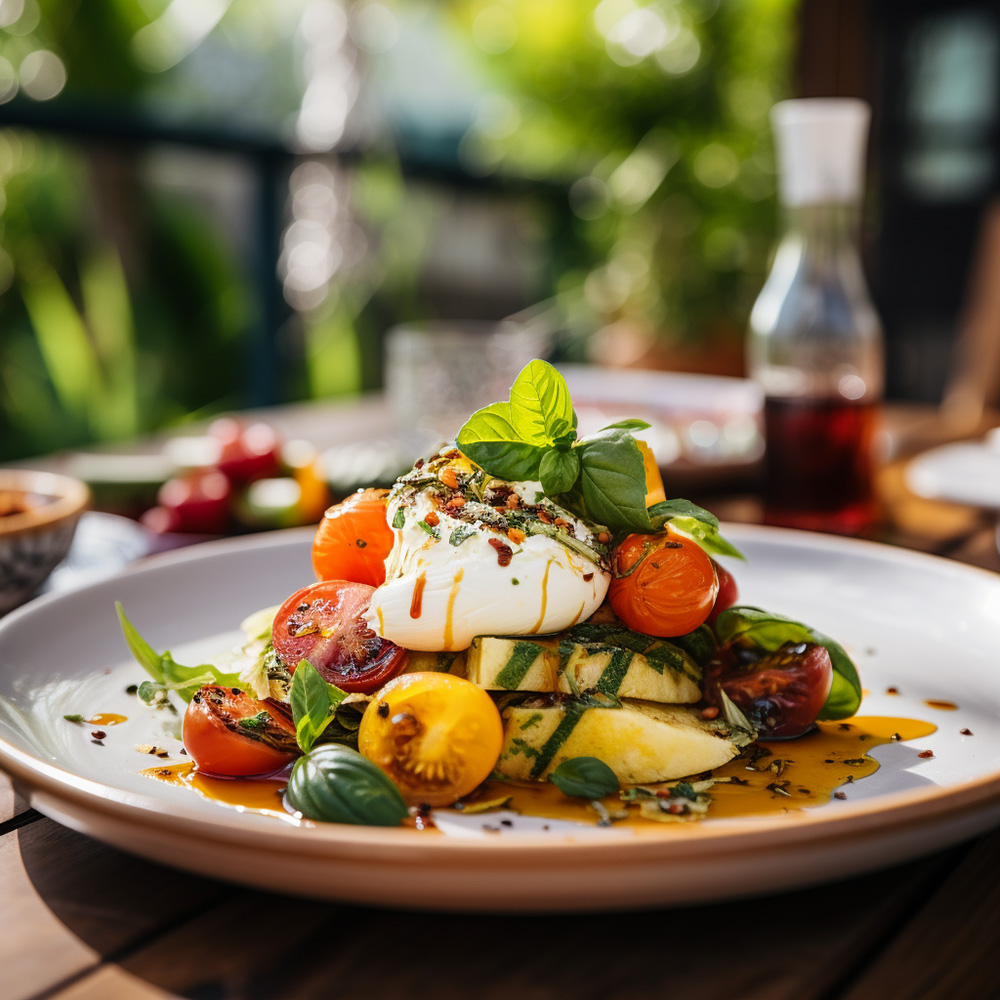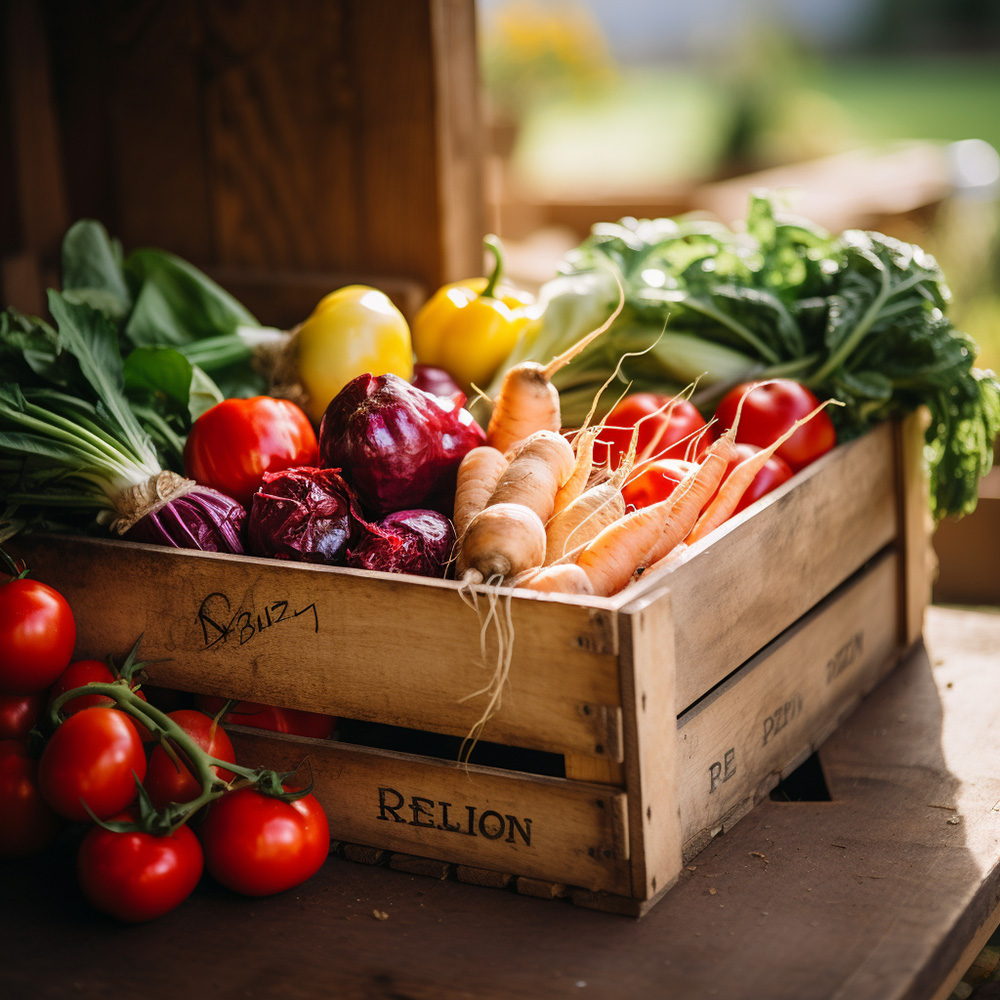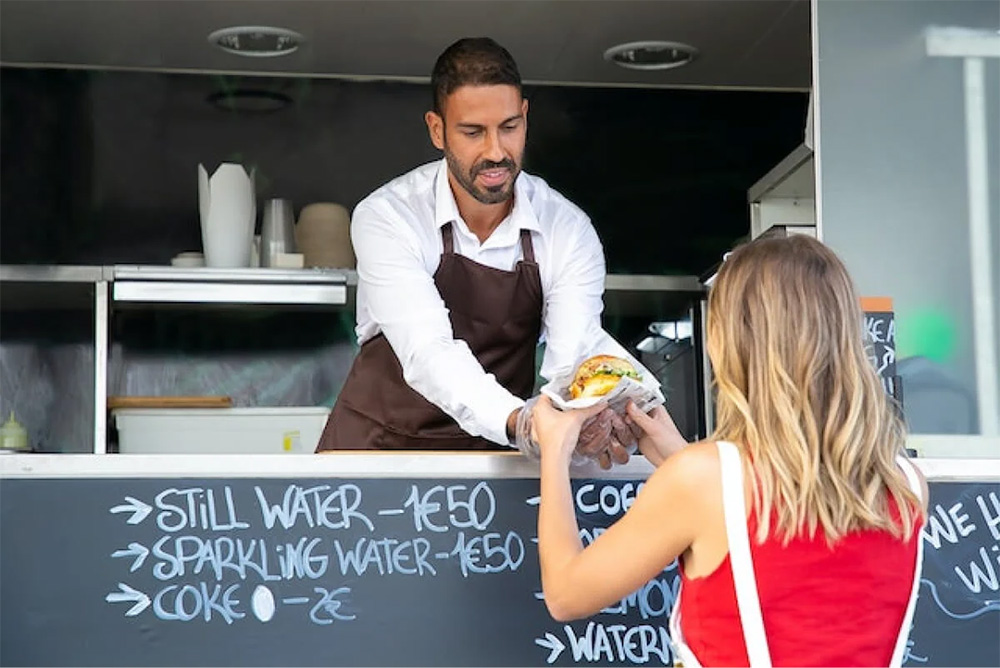
How to Calculate Food Costs: An In-Depth Guide
Whether you're running a restaurant, bar, or cafe, knowing how to calculate your food costs is key to keeping your business on track. In this article, we'll break down the process of crunching those numbers using simple methods that will empower you to make smarter decisions and maximise your profits.

Are you ready to dive in and conquer the world of food cost calculation? Let's get started!
What is the Way to Calculate Gross Profit?
Gross profit is a key metric that indicates the financial performance of your food business. It tells you how much money you're left with after covering the direct costs of making your delicious dishes. It's a powerful metric for assessing the profitability of your food sales and making savvy business decisions.
What is the Formula for Gross Profit?
To calculate gross profit on food, you need two things: your total revenue from food sales and the total cost of ingredients and other direct expenses involved in making that food. Here's the simple formula: Gross Profit = Revenue - Cost of Goods Sold (COGS)
How to use the Formula for Gross Profit?
Here's a step-by-step guide for using the Gross Profit Formula:
- Determine your total revenue from food sales within a specific period.
- Calculate the total cost of ingredients and direct expenses directly associated with producing the food.
- Subtract the COGS from the revenue to obtain your gross profit.
- Interpret the results: a positive gross profit indicates a profitable operation, while a negative value signals potential issues with cost control or pricing strategies.
What is an Example of Gross Profit?
Let's say your restaurant generated $10,000 in food sales last month, and the cost of ingredients and direct expenses related to those sales amounted to $4,000. By applying the formula, your gross profit would be $10,000 - $4,000 = $6,000. This means you earned $6,000 after covering the direct costs of producing and serving the food.

Need a Hand with Your Food Calculations?
Ditch the stress of tracking expenses, managing inventory, and optimising your menu with Loaded, the ultimate food costing software. With Loaded's food calculator, crunching those numbers is a breeze, while minimising any pesky human errors that come with manual data entry. Give your restaurant the best chance of financial success. Try Loaded for free for 30 days .
What is Profit Margin on Food?
Profit margin tells you how much profit you're making for every dollar of revenue. In the food world, profit margin reveals how well you're managing costs and pricing. A higher margin means a more profitable restaurant business and financial health.
What is a Typical Profit Margin on Food?
There's no one-size-fits-all answer, but on average, the food, bar and restaurant industry shoots for profit margins ranging from 3% to 15%. Keep in mind that margins can vary widely based on factors like your business type, location, competition and target market. It's essential to do some market research and set realistic goals for your specific circumstances.
The average restaurant profit margins are listed below:
Average Restaurant Profit Margins

Sources: *Restaurant365, **Binwise, ***azcentral
What Factors Affect Profit Margins?
Several factors influence your profit margin, including ingredient costs, labour expenses, overhead costs, pricing strategies, competition and customer demand. By analysing these factors, you can identify areas for improvement and take action to boost your profitability.

What Are Costs of Goods Sold?
When it comes to the food industry, Costs of Goods Sold (Abbreviation COGS) refers to the total expenses incurred directly in producing the food or beverage items that are sold. COGS is sometimes referred to as the formula for food cost. These costs include the raw materials used, such as ingredients, packaging, and any other direct costs associated with preparing and serving the food. In a nutshell, COGS is all about the cold, hard cash you're shelling out to create those delicious menu items.
What is the Formula for Cost of Goods Sold?
COGS = Initial Inventory + Purchases - Closing Inventory
It's simpler than it sounds. Here's the recipe:
- Initial Inventory: This is like taking stock of what you already have on hand at the start of a specific time frame . It includes all the ingredients and raw materials you've got in your food inventory.
- Purchases: This is the total cost of the additional ingredients and materials you've bought during that time period. It's basically what you spent to restock your pantry.
- Closing Inventory: This is what's left in your inventory at the end of the same time period. It includes the value of any ingredients that didn't make it into your culinary creations or get sold.
By subtracting the closing inventory from the sum of the initial inventory and inventory purchases, you've got yourself the COGS for that timeframe.
What Percentage Should your Costs of Goods be?
Now, let's talk about the magic number when it comes to your costs of goods. Keep in mind, it can vary depending on factors like the type of food joint you're running, your location and your target market. As a general rule of thumb, shoot for your COGS to be around 25-35% of your total food sales.
Why is this range important, you ask? Well, by sticking within this sweet spot, you'll have enough cash to cover other essential expenses like labour, rent, inventory costs and keeping the lights on. Plus, it leaves room for some tasty profit.
But hey, don't forget to keep an eye on your COGS. If they start going above the desired range, it's time to put on your detective hat. Look for ways to trim expenses, negotiate better deals with suppliers or adjust your restaurant menu prices to keep things in balance.

What is Food Cost Percentage and Why is It Important?
Food Cost Percentage (FCP) is the percentage of your total sales revenue that goes toward the cost of producing the food you serve. Ideal Food Cost Percentage takes into account all the expenses related to ingredients, labour and overhead costs.
What makes an ideal Food Percentage so important? Well, it acts as your financial compass, guiding you through the complex landscape of profitability. By monitoring and analysing your actual Food Cost Percentage, you gain insights into the efficiency of your operations, pricing strategies and the overall health of your food service business. It helps you make informed decisions to optimise your menu offerings, ensure effective menu pricing, control costs and maximise your profits. Food Cost Percentages are calculated using Food Cost Formula.
What are the Three Ways to Calculate Ideal Food Cost Percentage?
Let's explore the three food cost percentage formulas that are used to calculate Ideal Food Cost Percentage. Choose the one that suits your culinary style:
- Simple Calculation: This method is like a quick and easy recipe. Here's how it goes:
Food Cost Percentage = (Cost of Goods Sold / Total Sales) x 100
- Cost of Goods Sold (COGS): This includes all the expenses directly tied to producing the food, such as ingredients, packaging and direct labor costs.
- Total Sales: This represents the total revenue generated from the sale of food and beverages.
Divide the COGS by the Total Sales, multiply by 100, and voilà! You've got your Food Cost Percentage.
- Weighted Average Calculation: If your menu has various items with different costs and sales prices, this method will give you a more accurate picture. Here's the recipe:
Actual Food Cost Percentage = (Weighted Cost of Goods Sold / Total Sales) x 100
- Weighted Cost of Goods Sold: For each menu item, multiply its individual cost by the percentage of sales it contributes to the total sales revenue. Sum up these values to get the weighted cost.
Divide the weighted cost by the Total Sales, multiply by 100, and there you have it - your Food Cost Percentage.
- Contribution Margin Calculation: This method combines ideal FoodCP with profit margins. It helps you understand how much each menu item contributes to your overall profitability. Here's the spice blend:
Food Cost Percentage = (1 - Contribution Margin) x 100
- Contribution Margin: It's the difference between the sales price of an item and its variable costs (costs directly associated with that item). Divide this difference by the sales price to get the Contribution Margin.
Subtract the Contribution Margin from 1, multiply by 100, and your Ideal Food Cost Percentage is served!
A food cost calculator can assist with all those pesky manual calculations. Check out Loaded’s in-built food cost calculator feature.
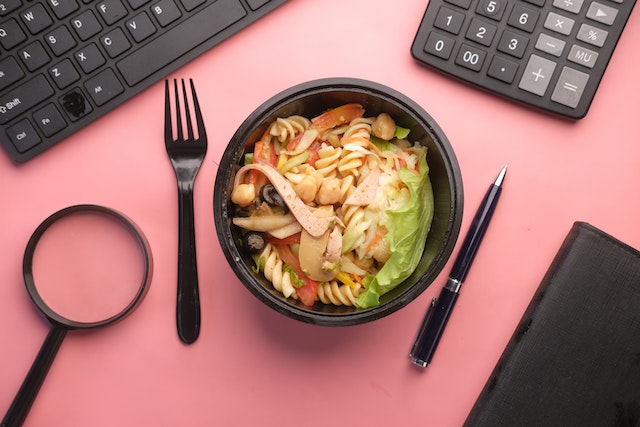
What is Menu Mix?
Menu mix is all about the tasty balance and variety on your menu. Essentially, Menu mix is the assortment of dishes you've got on display.
Most importantly for you, it's about having an easy way of figuring out which menu items are the rockstars and which ones need a little boost. By gathering data on each item's sales and popularity, you then see how they stack up against each other. This helps you understand which dishes are the crowd-pleasers and which ones might need a recipe tweak or a little extra promotion.
How do you calculate Menu Mix Percentage?
Here's how you calculate Menu Mix:
- Identify Menu Items: Make a list of all the items on your menu, from appetisers to desserts.
- Collect Sales Data: Gather the sales data for each menu item, typically in terms of units sold or revenue generated. This can easily be done by analysing your POS sales data.
- Calculate Percentage: Divide the sales of each menu item by the total sales of all items, and multiply by 100 to get the percentage contribution of each item to the overall menu mix.
By crunching these numbers, you'll have a clear picture of which dishes are the heavy hitters and which ones may need some attention. If you calculate the profit margins for each of your menu items first, you can then review your Menu Mix percentages regularly so you can make adjustments which lead to profitable dishes and more profitable menus over time.
What is a Good Menu Mix Percentage?
So what is the ideal menu mix percentage? While it can vary depending on factors like your concept, target audience, and market trends, a general guideline is to aim for a diverse menu mix where no single item dominates or lags significantly. A balanced menu mix promotes variety, customer satisfaction, and ensures that you're maximising the potential of each menu item. As a rule of thumb, strive for each item to contribute around 10-20% of the total sales.
Don't Waste Your Time Calculating Menu Mix Manually!
Don't waste your precious time and energy crunching menu mix numbers manually! We've got you covered with Loaded Hospitality Software. Say goodbye to tedious calculations and hello to simplicity and efficiency.
Whether you're a small cafe, a bustling restaurant, or a hip food truck, Loaded's food cost calculator is designed to make your life easier. Just input your menu items, their costs and their sales data, and let Loaded work its magic. Take advantage of our 14-day free trial period and unlock the potential of Loaded Hospitality Software.

What is Sales Mix in Food Costing?
Sales mix is the secret sauce that affects your bottom line. Sales mix refers to the proportionate distribution of sales across different menu items. It showcases your most popular and profitable items on your menu as well as the ones that aren't. Understanding the sales mix is crucial for effective food costing, as it helps you allocate costs accurately to each menu item based on their contribution to sales revenue. It ensures that you have a comprehensive view of the profitability of your menu as a whole.
What is an Example of Sales Mix?
Let's say you run a bustling restaurant with a variety of menu items. Your sales mix refers to the distribution of sales among those different menu items. Here's an example to help illustrate the concept:
Menu Item | Units Sold | Revenue Generated
Burger | 100 | $1,500
Pizza | 80 | $1,200
Salad | 50 | $750
Pasta | 70 | $1,050
In this example, the sales mix represents the proportionate contribution of each menu item to the total sales revenue. To calculate the sales mix percentage, you would divide the revenue generated by each menu item by the total revenue and multiply by 100.
Using the example above:
- Burger Sales Mix: ($1,500 / $4,500) x 100 = 33.33%
- Pizza Sales Mix: ($1,200 / $4,500) x 100 = 26.67%
- Salad Sales Mix: ($750 / $4,500) x 100 = 16.67%
- Pasta Sales Mix: ($1,050 / $4,500) x 100 = 23.33%
So, in this case, the sales mix reveals that the burger has the highest sales per dish contribution at 33.33%, followed by the pizza at 26.67%, salad at 16.67%, and pasta at 23.33%. This information can help you understand which restaurant menu items are the most popular and have the greatest impact on your overall sales revenue. It allows you to make data-driven decisions regarding menu optimisation, pricing strategies, and promotional efforts to maximise your profitability.

.
Supercharge Your Food Cost Calculations with Loaded's In-Built Calculator
Understanding how to calculate food costs, analysing your key metrics like gross profit, profit margin, menu mix, and sales mix and taking action to improve your results is crucial for the success of your restaurant, bar or cafe.
These calculations empower you to make informed decisions, optimise your menu, control costs, and maximise your profits. With Loaded's in-built food cost calculator, you can say goodbye to manual number crunching and hello to efficiency and accuracy.
Don't let food costs hold you back; level up your business with Loaded's in-built calculator and conquer the world of food cost management.
Try Loaded for 14 days for free.
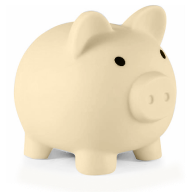
More Profit
Making money doesn’t happen by accident! Learn how to tune your business and improve your bottom-line.

More Success Stories
Get inspired by stories from real Loaded customers who run thriving hospitality businesses.
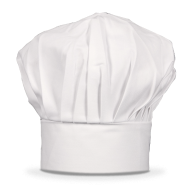
More Labour
Get tips for optimising your staff’s time, and for managing your team effectively.

More Culture
Making money doesn’t happen by accident! Learn how to tune your business and improve your bottom-line.

More Design
Making money doesn’t happen by accident! Learn how to tune your business and improve your bottom-line.

More Design
Making money doesn’t happen by accident! Learn how to tune your business and improve your bottom-line.

More Design
Making money doesn’t happen by accident! Learn how to tune your business and improve your bottom-line.
Learn from the best
Find articles, videos, E-books and more all delivered by our qualified, world-class community of expert hospitality operators: take a look
Season 2: Spring Bootcamp for a Money-Making Summer
We've poured our 100+ combined years of hospitality experience into a series of live and recorded webinars that will be your bootcamp for a money-making summer.



